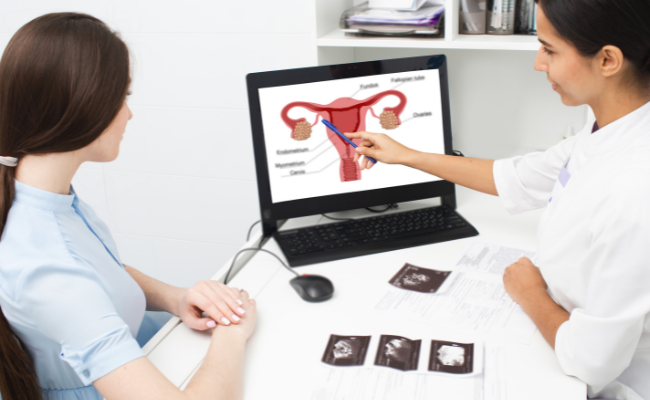Know about Womb Removal
- November 27, 2023
- No Comments

What is Womb Removal?
Womb removal, or hysterectomy, is a surgical procedure involving the extraction of a woman's uterus—a vital organ in the female reproductive system. The procedure includes various types such as total hysterectomy (removing the uterus and cervix), partial hysterectomy (removing the uterus while preserving the cervix), and radical hysterectomy (removing the uterus, cervix, parts of the vagina, and surrounding tissues).
This surgical intervention, which may extend to adjacent organs like the fallopian tubes and ovaries, carries significant implications for a woman's health. The uterus, essential for fetal development and menstrual cycles, becomes non-functional after a hysterectomy, rendering conception impossible and halting menstrual periods.
Why is Womb Removal Performed?
Womb removal is recommended for various medical reasons, and the decision is often made after careful consideration of the patient's health and specific conditions. Some common reasons for womb removal include:
- Uterine Cancer: Hysterectomy is a common treatment for uterine cancer, where the removal of the uterus helps eliminate cancerous cells and prevents the spread of the disease.
- Fibroids: Uterine fibroids are non-cancerous growths in the uterus that can cause pain, heavy menstrual bleeding, and other complications. In cases where fibroids are large or causing severe symptoms, a hysterectomy may be recommended.
- Endometriosis: Severe cases of endometriosis, a condition where the tissue lining the uterus grows outside the uterus, may require a hysterectomy to alleviate symptoms and improve the patient's quality of life.
- Uterine Prolapse: When the uterus descends into the vaginal canal due to weakened pelvic floor muscles, a hysterectomy may be performed to correct the prolapse.
- Chronic Pelvic Pain: In some cases, chronic pelvic pain that does not respond to other treatments may lead to a recommendation for hysterectomy.
How is Womb Removal Performed?
The method of performing a hysterectomy can vary based on the patient's condition, the reason for the surgery, and the surgeon's expertise. The three main types of hysterectomy procedures are:
- Abdominal Hysterectomy: This involves making an incision in the abdomen to access and remove the uterus. Abdominal hysterectomy is often recommended when there are large fibroids or other complications.
- Vaginal Hysterectomy: In this procedure, the uterus is removed through the vagina. Vaginal hysterectomy is less invasive than abdominal hysterectomy and typically results in a quicker recovery.
- Laparoscopic Hysterectomy: This minimally invasive procedure involves small incisions and the use of a laparoscope (a thin, lighted tube with a camera) to guide the surgeon in removing the uterus. Laparoscopic hysterectomy offers the advantage of shorter recovery times and less scarring compared to abdominal hysterectomy.
Treatment Solutions for Womb Removal:
- Hormone Replacement Therapy (HRT): After a hysterectomy, women may experience menopausal symptoms due to the removal of the uterus and, in some cases, the ovaries. Hormone replacement therapy can help alleviate symptoms such as hot flashes, mood swings, and vaginal dryness.
- Pelvic Floor Exercises: For women undergoing a hysterectomy to address pelvic organ prolapse, pelvic floor exercises may be recommended as part of the post-surgery rehabilitation. These exercises strengthen the muscles supporting the pelvic organs.
- Psychological Support: The emotional impact of womb removal should not be underestimated. Women may experience a range of emotions, including grief, sadness, or relief. Access to psychological support and counseling can be crucial in helping individuals navigate the emotional aspects of the procedure.
Benefits of Womb Removal:
- Resolution of Medical Issues: Womb removal can effectively treat and resolve various medical conditions, such as uterine cancer, severe endometriosis, and problematic fibroids, improving the overall health and well-being of the patient.
- Relief from Symptoms: For women suffering from conditions like chronic pelvic pain, heavy menstrual bleeding, or uterine prolapse, hysterectomy can provide significant relief from these symptoms, enhancing their quality of life.
- Preventive Measures: In cases where there is a high risk of uterine cancer or other reproductive system disorders, a hysterectomy may be a preventive measure to reduce the risk of developing these conditions.
- Enhanced Quality of Life: Women who undergo womb removal for medical reasons often experience improved quality of life, with relief from pain, discomfort, and emotional distress associated with their underlying health issues.
- Increased Longevity: In some cases, hysterectomy can contribute to increased longevity by eliminating the risks associated with certain gynecological conditions.
Comments (0)